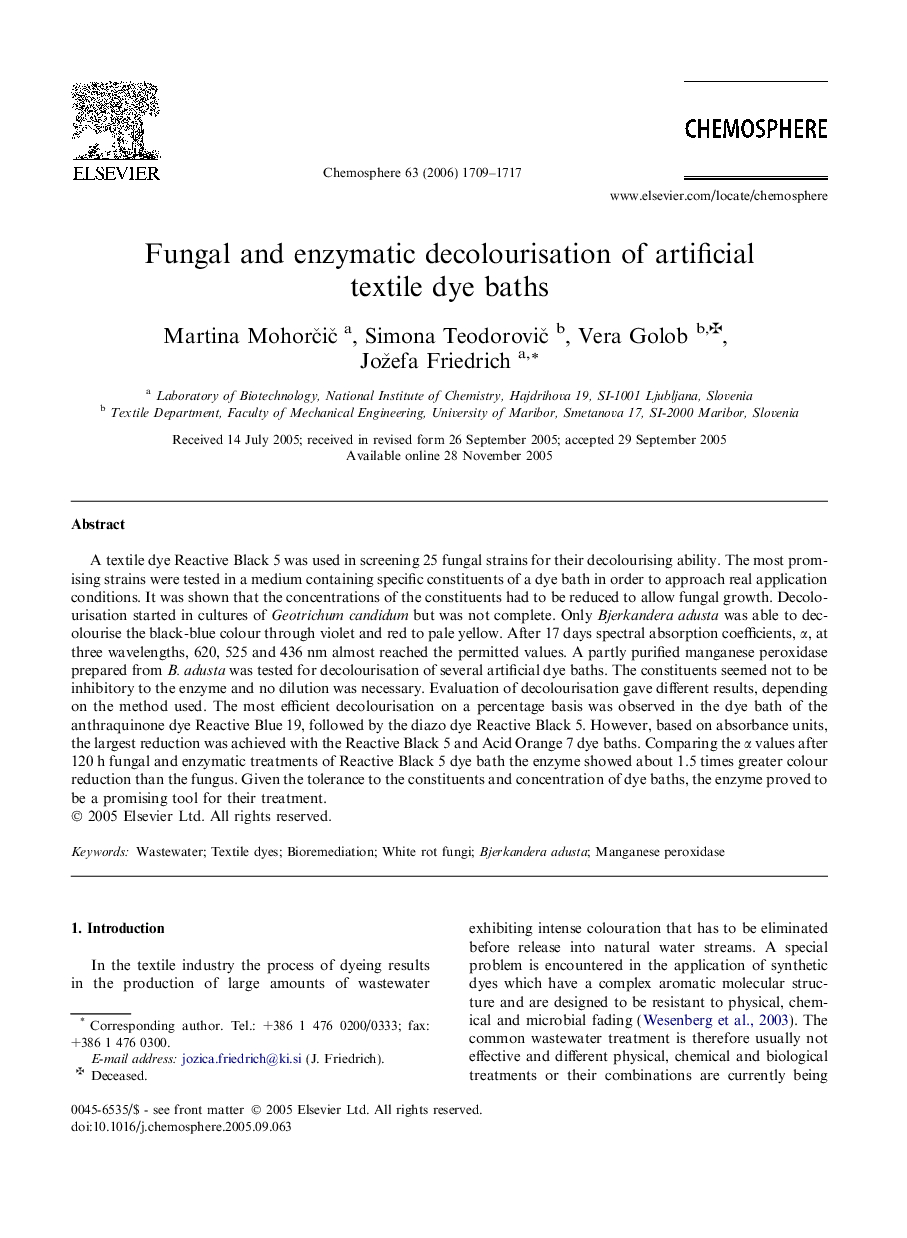| Article ID | Journal | Published Year | Pages | File Type |
|---|---|---|---|---|
| 4416465 | Chemosphere | 2006 | 9 Pages |
A textile dye Reactive Black 5 was used in screening 25 fungal strains for their decolourising ability. The most promising strains were tested in a medium containing specific constituents of a dye bath in order to approach real application conditions. It was shown that the concentrations of the constituents had to be reduced to allow fungal growth. Decolourisation started in cultures of Geotrichum candidum but was not complete. Only Bjerkandera adusta was able to decolourise the black-blue colour through violet and red to pale yellow. After 17 days spectral absorption coefficients, α, at three wavelengths, 620, 525 and 436 nm almost reached the permitted values. A partly purified manganese peroxidase prepared from B. adusta was tested for decolourisation of several artificial dye baths. The constituents seemed not to be inhibitory to the enzyme and no dilution was necessary. Evaluation of decolourisation gave different results, depending on the method used. The most efficient decolourisation on a percentage basis was observed in the dye bath of the anthraquinone dye Reactive Blue 19, followed by the diazo dye Reactive Black 5. However, based on absorbance units, the largest reduction was achieved with the Reactive Black 5 and Acid Orange 7 dye baths. Comparing the α values after 120 h fungal and enzymatic treatments of Reactive Black 5 dye bath the enzyme showed about 1.5 times greater colour reduction than the fungus. Given the tolerance to the constituents and concentration of dye baths, the enzyme proved to be a promising tool for their treatment.
